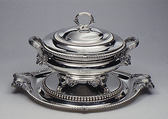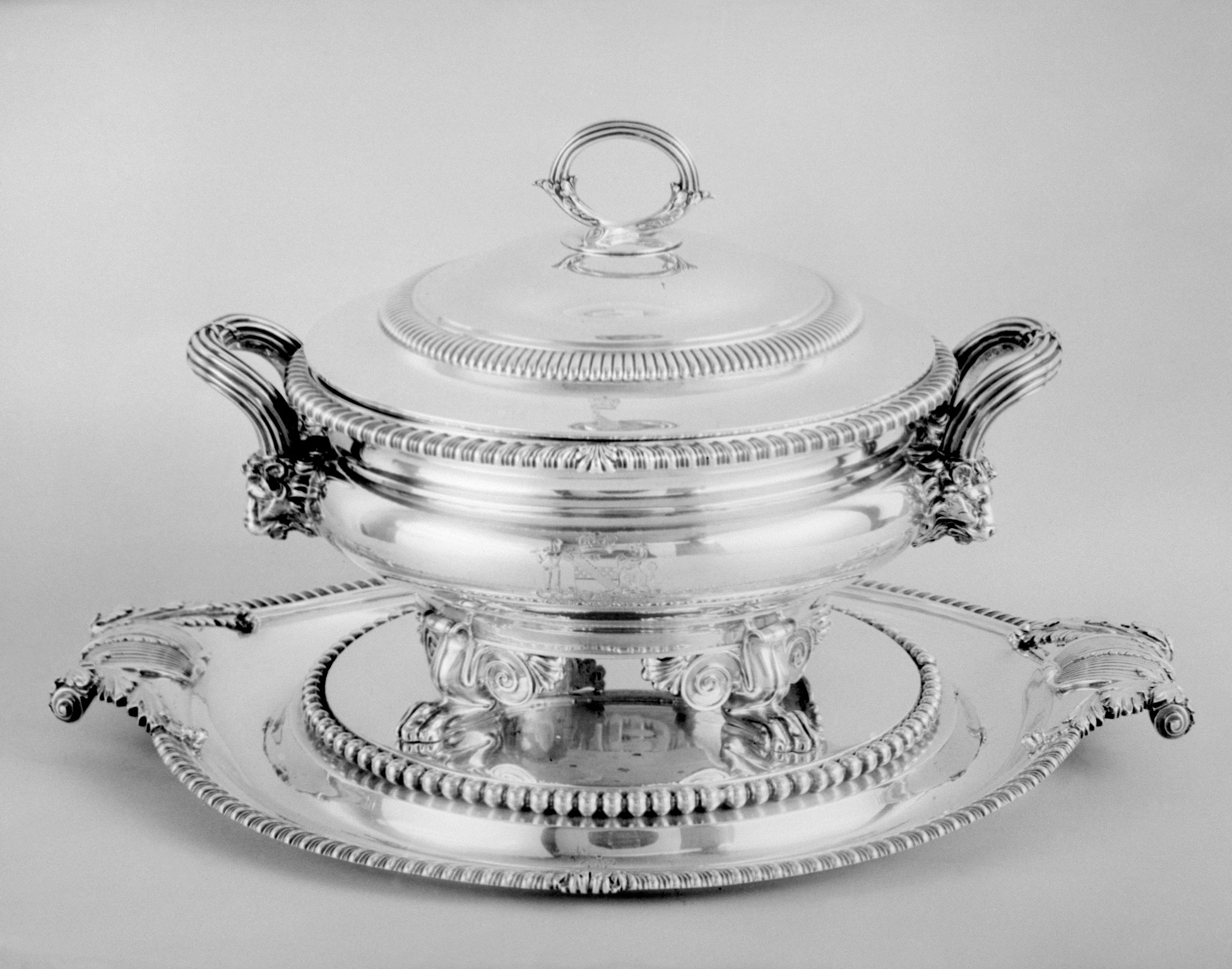Soup tureen with cover and stand
Paul Storr British
Not on view
This serene, imposingly large object shows the superb craftsmanship and personal style of Paul Storr before he joined the firm of Rundell, Bridge & Rundell in 1807. He is sometimes called the last of the goldsmiths. He was apprenticed to Andrew Fogelberg, a Swedish silversmith working in London, and his early work often reflected the elegant austerity of his master. In 1796, he set up his workshop and sale premises in Air Street, a turning off Piccadilly, and soon had a large and fashionable clientele. In 1807, however, Philip Rundell persuaded him to take charge of his workshop in Dean Street not far from Piccadilly but in Soho, an artists' and artisan's district. While the form of the soup tureen is entirely European, all the decorative elements are taken from classical sources—lions' head finials below the handles, edgings of convex flutes (gadroons), acanthus leaves on the handles of the underdish, and the very Roman large beading that finishes the edge of the raised platform at the center of the underdish. The feet are an eclectic combination of lions' paws, water leaves, a quarter anthemion, and a plain architectural scroll. The engraved arms are for Robert Walter Stewart, eleventh Baron Blantyre (1775–1830).
Due to rights restrictions, this image cannot be enlarged, viewed at full screen, or downloaded.
This artwork is meant to be viewed from right to left. Scroll left to view more.



